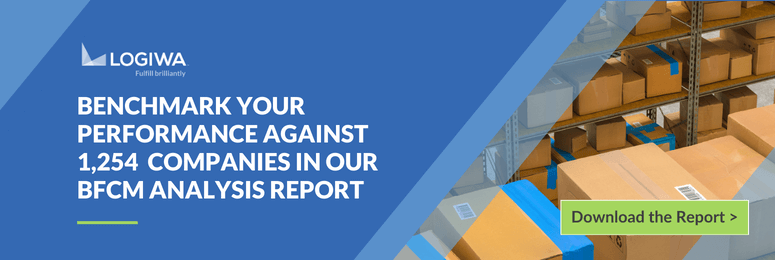Every company whose business involves the management of stock should be familiar with inventory-related terminology. Some of the many terms include: active stock, aisle, ATA, ATD, backorder, barcode, SKU, blind receiving, 3PL, 4PL, buffer stock, ending inventory, cargo, cross-aisle, consolidation, cross docking, cycle count, DDP, DSD, EAN, FIFO, LIFO, fixed slot, inventory system and more. Beginning inventory is arguably one of the most important of these concepts.
In this guide, we’ll help you understand:
What is Beginning Inventory?
The beginning inventory calculation is vital for those companies with warehouses of any size. Starting a new month with more inventory in hand than the month prior? This might be the best course of action if you’re preparing for a big sales campaign or the mad rush of Black Friday, Cyber Monday, and the whole holiday season. Starting the month with less stock than when you started? This is good news if special promotions are over or you expect demand to decrease. However, without accurate beginning inventory calculations, you’ll be managing warehouse inventory levels by feelings instead of by fact.
The term “beginning inventory” is simply the number of products in stock at the start of an accounting period. Different businesses will, of course, count inventory in different ways. If you’re stocking items such as shoes or shovels, you probably count in simple units. If you’re dealing in raw materials such as gravel, bark dust, and the like, you’ll count in unit quantities such as weight or volume. Or you might be dealing with more complex inventory such as both assembled computers and their component parts. Whatever the case, it’s important to count the same item types the same way every time you take inventory. The next step is to put those accurate counts to use in making smart business decisions that ensure smooth ordering and fulfillment operations. This is where the beginning inventory calculation comes into play.
How to Calculate Beginning Inventory
You have the figures of ending inventory and cost of goods sold (COGS) from the previous period. With those in hand, you can start to calculate beginning inventory for the start of a new accounting period. The formula is as follows:
Beginning Inventory Formula = (COGS + Ending Inventory) – Inventory Purchases
Let’s explain it with a simple example:
Say that you are a white goods seller and you sold 1000 washing machines during the last accounting period, each costing $200 to manufacture. The cost of goods sold is calculated by multiplying the manufacturing price by the quantity:
COGS = Manufacturing Price x Quantity
$200 x 1000 = $200,000
Assume that you have 250 washing machines left at the end of the period. You’ll also need to know the ending inventory value for the period, which is simply calculated by multiplying the manufacturing price by the remaining quantity of products:
Ending Inventory = Manufacturing Price x Remaining Quantity
$200 x 250 = $50,000
The last element in the beginning inventory formula is the value of purchases made during the accounting period. To calculate it, all you need to have is manufacturing price and inventory quantity purchased. Assume you purchased 200 washing machines during the period:
Inventory Purchases = Manufacturing Price x Quantity
$200 x 200 = $40,000
With all these figures in hand, you simply plug them into the beginning inventory formula:
Beginning Inventory = (COGS + Ending Inventory) – Purchases
($200,000 + $50,000) – $40,000 = $210,000
According to all these calculations, your beginning inventory is worth $210,000 at the start of the new accounting period. Calculating beginning inventory is just that easy. Now it’s just a matter of using that information to optimize your stock operations!

Where to Use Beginning Inventory
Now that you know how to find beginning inventory for your own business, it is time to put it to use. You should have your beginning inventory values calculated for all different stocked items at the start of each accounting period. Not only does having this information help you optimize warehouse operations, it helps you manage cash flow, can assist you when qualifying for any bank loans and will even inspire confidence with investors and partners. Since inventory is generally the biggest asset that ecommerce companies have, it is vital to know what you should have in hand from the start of a new period – for both your operations and your company’s financial health.
Beginning inventory is necessary for internal accounting documentation. This figure may help you with ecommerce bookkeeping in many ways, such as spotting possible discrepancies, guessing future production, and tracking inventory write-offs due to any theft, loss, or decline in demand. When you can rely on your inventory figures at the beginning of every period, it is easier to deal with the inevitable fluctuations in market conditions.
As mentioned, knowing your beginning inventory also helps you manage cash flow and even impacts the tax deductions you can realize. For example, carrying too much inventory will reduce your tax benefit since deductions are calculated after the goods are sold, deemed worthless, or disposed of. And of course keeping excess stock on hand adds to both warehousing costs and potential financial risk.
You may also like: Want to learn how to calculate inventory turnover ratio? Check out the inventory turnover ratio calculator and improve your turnover ratios over time.
Beginning Inventory with Multiple Warehouses
Many large companies deal with high-volume shipping operations every day where stock is divided up and warehoused at different centers in different locations. This of course helps improve delivery times and decreases shipping costs. To help manage these complex operations, large companies generally prefer to use optimized shipping processes. When companies deploy a cloud-based ordering, fulfillment and shipping software system across their distribution network, they can simply login from anywhere they are and have access to real-time inventory counts. Without minimal effort, they can calculate ending and beginning inventories, automate the labeling process, integrate digital scales, different group shipping options, and enjoy many more time, money, and labor saving benefits.
Conclusion
Calculating beginning inventory might seem straightforward, but its importance in ordering and fulfillment can’t be overstated. These values drive informed business decisions. Fluctuating inventory levels can signal strong sales, supply chain issues, or shifts in market demand. Understanding these shifts is crucial for B2C or DTC success. Harness the power of Logiwa WMS to optimize your inventory management today!
Related Terms
Consignment inventory arrangements offer benefits for both suppliers and retailers. Click here to find out more about consignment inventory management.
Here is everything you need to know about the days in inventory formula, how to calculate it, and the ways to improve your inventory days formula to optimum levels
The average inventory formula with all necessary definitions is here in Logiwa Blog. To learn more about how to calculate your average inventory, keep reading our article!
With a Barcode Inventory System, you can make your warehouse operations much faster and simpler. Click here and learn more about inventory system with barcode!
Getting well-prepared for the holiday season and optimizing inventory is the most crucial task that retailers can do for their business.
Perpetual inventory system is fully covered here from the definition to perpetual inventory system examples. Click and learn What is the perpetual inventory system now!
From description to benefits, here is everything about Ending Inventory. Click now to learn how to calculate ending inventory and the details of ending inventory formula.
FAQs
What is beginning inventory?
Beginning inventory refers to the book value of a company’s inventory at the start of an accounting period. The beginning inventory will almost always be the same as your ending inventory (also called “closing inventory”).
How do you calculate beginning inventory?
The formula is: Beginning Inventory = (COGS + Ending Inventory) – Inventory Purchases
What is the difference between ending inventory and beginning inventory?
Ending inventory is calculated by summing up your beginning inventory and net purchases and extracting it from your cost of goods sold (COGS). Bginning inventory, on the other hand, is calculated by adding your COGS to ending inventory and extracting the result from purchases.
Why is calculating beginning inventory necessary?
Beginning inventory is necessary because it shows you how many products you have in your stock at the start of each period. This lets you better understand sales and operational trends for a certain business and make improvements accordingly.
Scale up B2C fulfillment with an integrated digital warehouse and fulfillment system
3PL
Cloud 3PL software for high-volume fulfillment excellence






